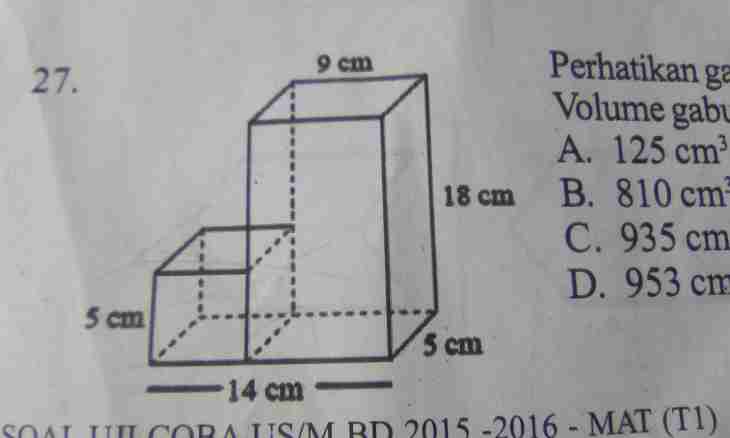In geometry a parallelepiped - the three-dimensional number created by six parallelograms (the term a rhomboid is also sometimes used with this value).
Instruction
1. In Euclidean geometry its definition covers all four concepts (that is, a parallelepiped, a parallelogram, a cube, and a square). In this context of geometry in which corners are not differentiated its definition allows only a parallelogram and a parallelepiped. Three equivalent definitions of a parallelepiped: * the polyhedron with six sides (hexagon), each of which is a parallelogram, * a hexagon with three couples of parallel sides, * a prism which basis - a parallelogram.
2. Rectangular cuboides (six rectangular sides), the cube (six square parties), and a six-sided rhombus are concrete types of a parallelepiped.
3. Parallelepiped volume – set of sizes of its basis - A and its height - H. A basis - one of six sides of a parallelepiped. Height - perpendicular distance between a basis and the opposite side.
4. The alternative method of scoping of a parallelepiped is carried out by means of its vectors = (A1, A2, A3), b = (B1, B2, B3). Parallelepiped volume, therefore, equals to an absolute value of three values - a • (b × c): A = | b | | c | error degree at the same time θ = | b × c |, where θ - a corner between b and c, and h height = | a |, because α, where α - an internal corner between an and h.

